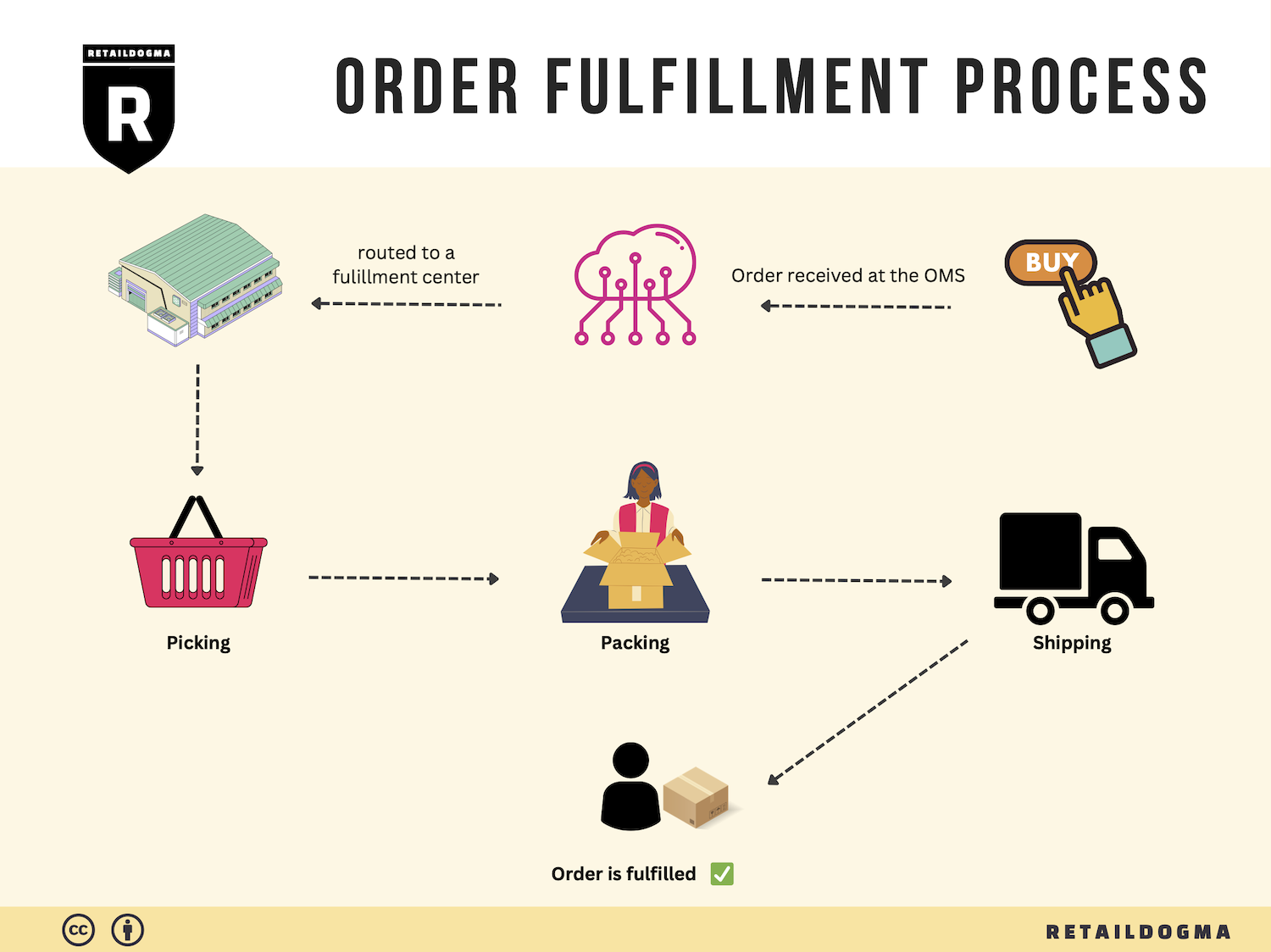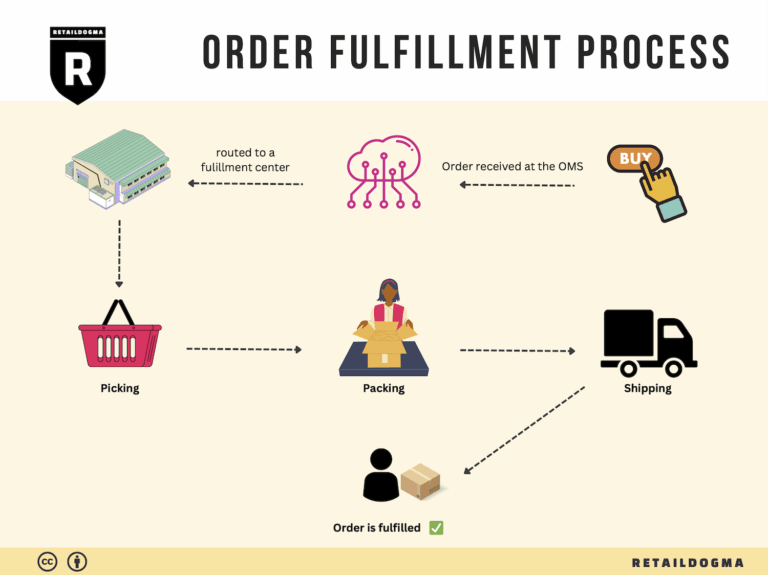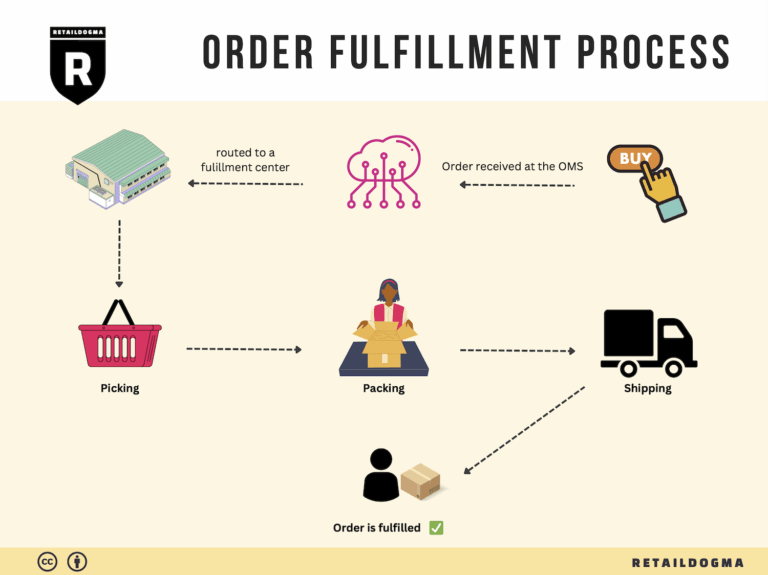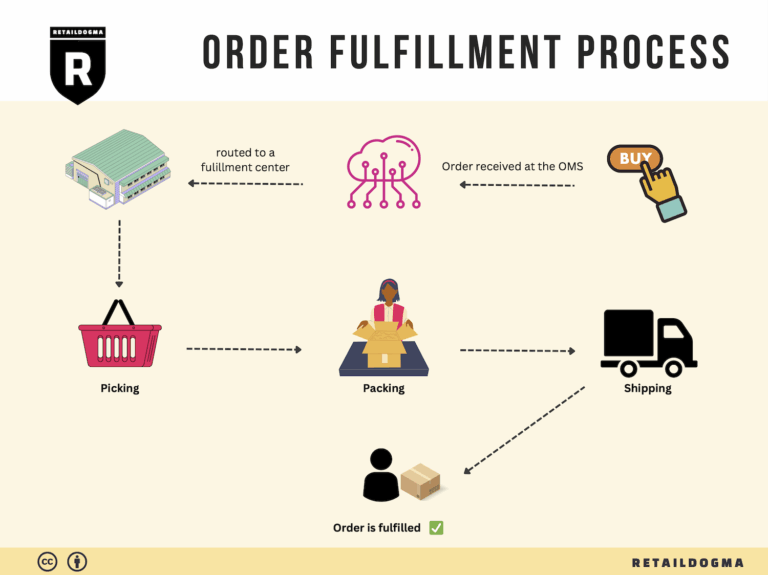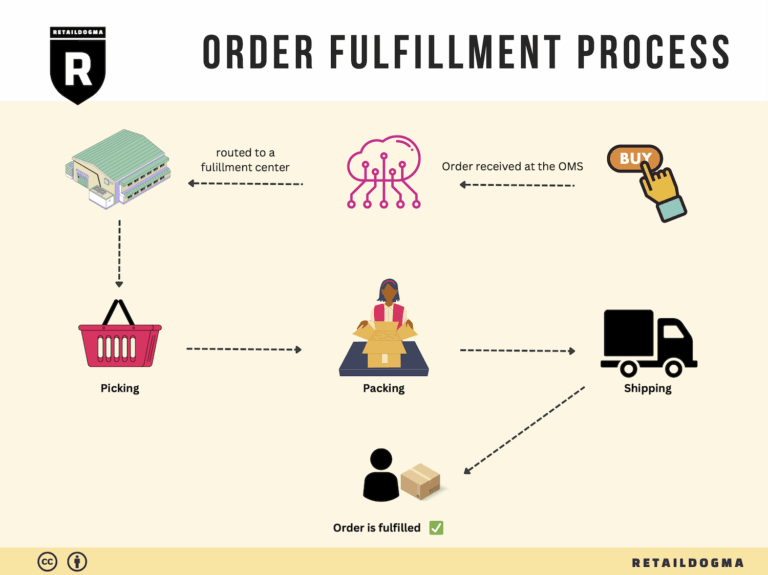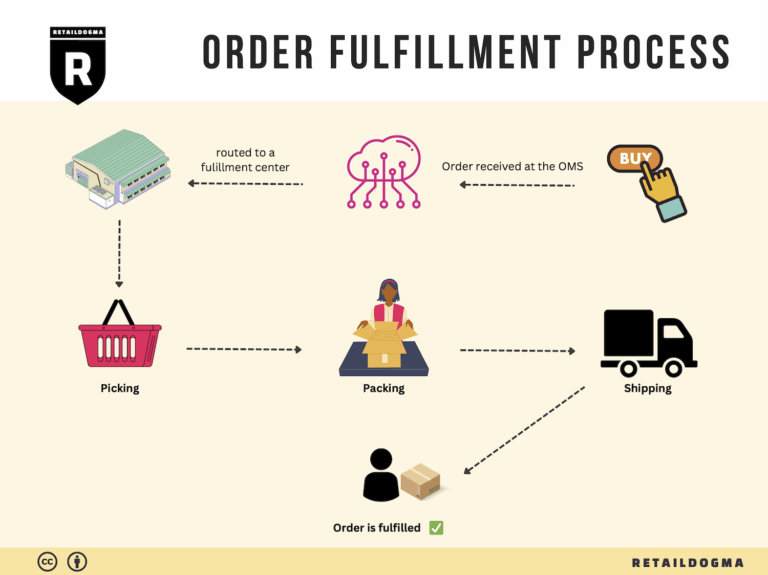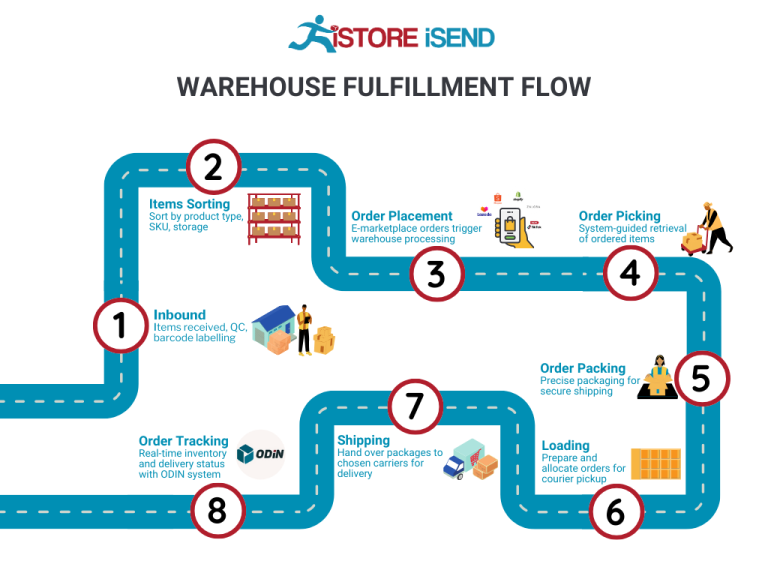What Is A Fulfillment Center? A Complete Guide (2025)
What is E-commerce Fulfillment? An Introduction for Growing Businesses
Understanding E-commerce Fulfillment
As an online business owner, you know that the thrill of growing sales can quickly turn into the stress of managing logistics. Many entrepreneurs find themselves overwhelmed by the mounting tasks of packing, shipping, and tracking orders. This is where e-commerce fulfillment comes into play—a critical component in the journey from order placement to product delivery. Simply put, fulfillment is the process of getting a product from your inventory to your customer’s doorstep.
In today’s competitive landscape, efficient fulfillment is vital not just for customer satisfaction but also for maintaining operational efficiency and scaling your business. With various fulfillment models available, such as Fulfillment by Amazon (FBA) and third-party logistics (3PL), understanding your options can help you make informed choices that align with your growth goals.
This guide will cover the essential aspects of e-commerce fulfillment, including:
-
Fulfillment Models: We’ll explore the differences between FBA and 3PL, examining how each can cater to your specific business needs. FBA offers seamless integration with Amazon’s marketplace, while 3PL provides flexibility and potentially lower costs, allowing you to manage fulfillment across multiple sales channels.
-
Core Services: Understanding the core services offered by fulfillment partners is crucial. From inventory management and order processing to shipping and returns handling, we will break down what you can expect from a fulfillment provider.
-
Choosing the Right Partner: Selecting the right logistics partner can make or break your fulfillment strategy. We’ll discuss key factors to consider when evaluating potential partners, including their technology capabilities, geographic reach, and customer service.
-
Pricing Structures: Lastly, we’ll delve into the various pricing models associated with fulfillment services. Understanding these costs will empower you to budget effectively and choose a solution that maximizes your profit margins.
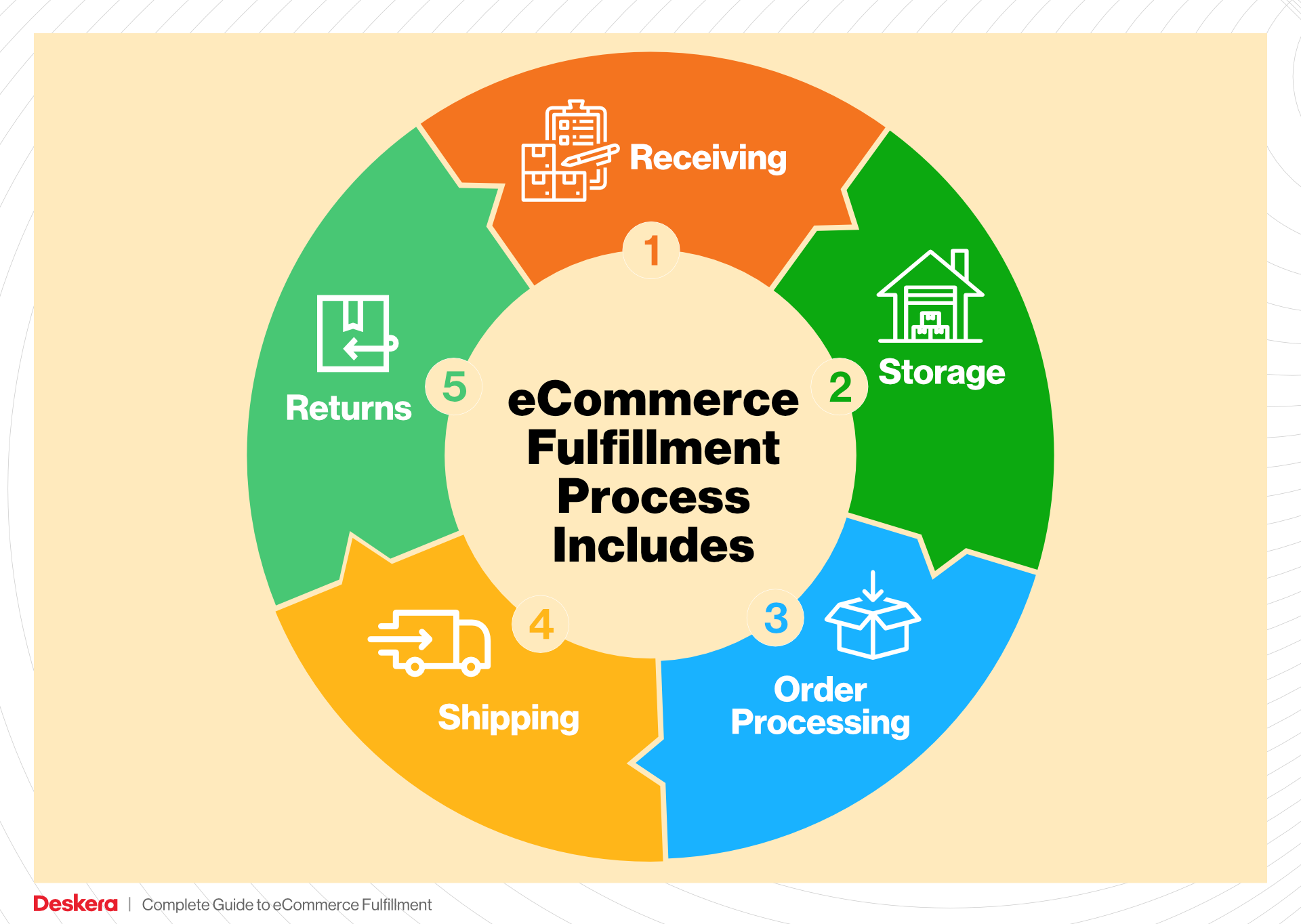
The goal of this guide is to empower you with the knowledge to make smart decisions about your logistics. By understanding the intricacies of e-commerce fulfillment, you can alleviate the burdens of packing and shipping, allowing you to focus on what you do best—growing your business. Whether you are a start-up or an established brand looking to scale, the right fulfillment strategy can unlock new levels of efficiency and customer satisfaction.
What You’ll Learn In This Guide
- What is E-commerce Fulfillment? An Introduction for Growing Businesses
- The Order Fulfillment Process: From ‘Buy’ Button to Customer’s Door
- Comparing Fulfillment Models: In-House vs. 3PL vs. Dropshipping
- A Deep Dive into Amazon FBA: Pros, Cons, and Who It’s For
- Core Services Offered by Fulfillment Centers
- How to Choose a Fulfillment Partner: A 6-Point Checklist
- Understanding Fulfillment Pricing: A Breakdown of Common Fees
- Frequently Asked Questions (FAQs) about Fulfillment
- Conclusion: Is Outsourcing Fulfillment the Right Move for Your Business?
- Important Disclaimer
The Order Fulfillment Process: From ‘Buy’ Button to Customer’s Door
1. Receiving Inventory
The first step in the order fulfillment process is receiving inventory. This involves accepting goods from suppliers or manufacturers and verifying that the quantity and quality match the purchase order. Upon receipt, each item is assigned a Stock Keeping Unit (SKU), a unique identifier that helps track products throughout the supply chain.
Importance: Efficient inventory receiving is crucial as it sets the foundation for all subsequent steps. Errors during this stage can lead to inventory discrepancies, resulting in stockouts or overstock situations. Accurate receiving ensures that businesses maintain optimal inventory levels, facilitating smoother operations down the line.
2. Warehouse Storage
Once the inventory is received, it is stored in a warehouse. This step involves organizing products in a manner that maximizes space and facilitates easy access. Effective warehouse management systems (WMS) help categorize items, often by SKU, to streamline storage and retrieval processes.
Importance: Proper storage is essential for maintaining product integrity and reducing retrieval time. An organized warehouse minimizes the time it takes to locate items, which is critical for meeting customer expectations for fast order fulfillment. Moreover, strategic storage solutions can optimize space, reducing overhead costs associated with warehousing.
3. Order Picking
When a customer places an order, the next step is order picking. This process involves selecting the right products from the warehouse based on the order details. Companies often use pick lists—documents that outline the items and quantities to be retrieved—to guide warehouse staff in their picking activities.
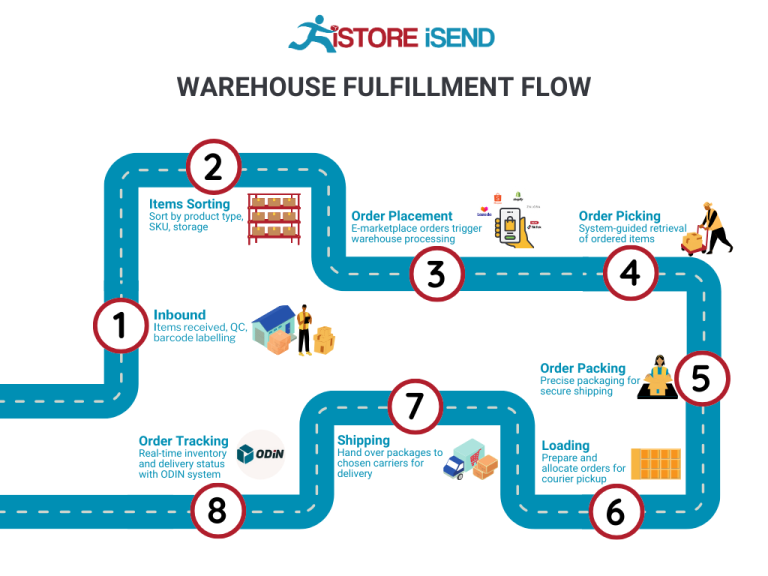
Importance: Order picking is one of the most labor-intensive aspects of fulfillment and directly impacts order accuracy. Efficient picking processes, such as batch picking or zone picking, can significantly enhance productivity and minimize errors. By optimizing this step, businesses can ensure that customers receive the correct items promptly, improving overall satisfaction.
4. Order Packing
After items are picked, they are moved to the packing area. During this stage, products are carefully packed into boxes or envelopes, often using packing materials to prevent damage during transit. This is also where shipping labels are generated, and any necessary documentation is included.
Importance: Order packing is crucial for ensuring that products arrive at their destination in perfect condition. Well-packed orders reduce the likelihood of returns due to damage, which can be costly for businesses. Additionally, effective packing strategies can help optimize shipping costs by minimizing package size and weight, ultimately leading to better profit margins.
5. Shipping & Delivery
The final step in the order fulfillment process is shipping and delivery. Once orders are packed, they are handed over to carriers for delivery to the customer. Businesses must choose the right shipping methods based on factors such as cost, delivery speed, and customer preferences. Tracking systems are often employed to provide real-time updates to customers about their order’s status.
Importance: Efficient shipping and delivery are critical in today’s e-commerce landscape, where consumers expect quick and reliable service. A well-managed shipping process enhances customer satisfaction and loyalty. Additionally, utilizing multiple shipping partners can provide flexibility and cost savings, allowing businesses to scale their operations effectively.
By implementing these five steps—receiving inventory, warehouse storage, order picking, order packing, and shipping & delivery—e-commerce businesses can create a streamlined order fulfillment process that enhances operational efficiency and boosts customer satisfaction. Understanding and optimizing each stage will ultimately position businesses for growth in the competitive online marketplace.
Comparing Fulfillment Models: In-House vs. 3PL vs. Dropshipping
Fulfillment Model Comparison
| Model | Who Handles Inventory | Best For (Business Stage) | Key Advantage | Key Disadvantage |
|---|---|---|---|---|
| In-House Fulfillment | The business itself | Startups to Established Brands | Full control over inventory and operations | High overhead costs and resource-intensive |
| Third-Party Logistics (3PL) | A third-party logistics provider | Growing Brands | Cost savings, scalability, and faster shipping | Less control over inventory management |
| Dropshipping | Supplier or manufacturer | New Entrepreneurs to Small Businesses | Low upfront costs and no inventory risk | Lower profit margins and longer shipping times |
In-House Fulfillment
In-house fulfillment involves managing the entire logistics process internally, from inventory storage to order processing and shipping. This model is often favored by startups and established brands that want complete control over their operations. By handling fulfillment in-house, businesses can ensure that their products are stored, picked, packed, and shipped according to their specific standards and timelines. This model allows for direct oversight of inventory management, quality control, and customer service, which can be crucial for maintaining brand integrity and customer satisfaction.
However, the main drawback of in-house fulfillment is the significant overhead costs associated with warehousing, staffing, and logistics management. These expenses can be particularly burdensome for small businesses or those just starting, as they require substantial upfront investment in facilities and resources. Additionally, as order volumes increase, managing fulfillment in-house can become resource-intensive and may detract from focusing on core business activities like marketing and product development.
Third-Party Logistics (3PL)
Third-party logistics (3PL) involves outsourcing fulfillment to a specialized logistics provider. 3PL companies handle various aspects of the supply chain, including inventory storage, order processing, and shipping. This model is particularly beneficial for growing brands that need to scale quickly without the overhead costs associated with in-house fulfillment. By leveraging a 3PL, businesses can tap into a network of fulfillment centers that are strategically located to ensure faster shipping times, often achieving Prime-like delivery standards.
One of the key advantages of using a 3PL is the potential for significant cost savings. Businesses can reduce overhead by outsourcing storage and shipping, allowing them to allocate resources to other critical areas of their operation. Additionally, 3PL providers often come equipped with advanced technology and analytics tools, enabling businesses to gain insights into their inventory and shipping processes. However, the trade-off is that businesses may experience less control over their inventory management, which can lead to challenges in aligning fulfillment operations with brand standards.
Dropshipping
Dropshipping is a fulfillment model where the retailer does not hold inventory but instead relies on suppliers or manufacturers to fulfill orders directly to customers. This model is particularly attractive to new entrepreneurs and small businesses because it requires minimal upfront investment. Retailers can create an online store without the burden of managing inventory, warehousing, or shipping logistics. When a customer places an order, the retailer simply forwards the order details to the supplier, who then ships the product directly to the customer.
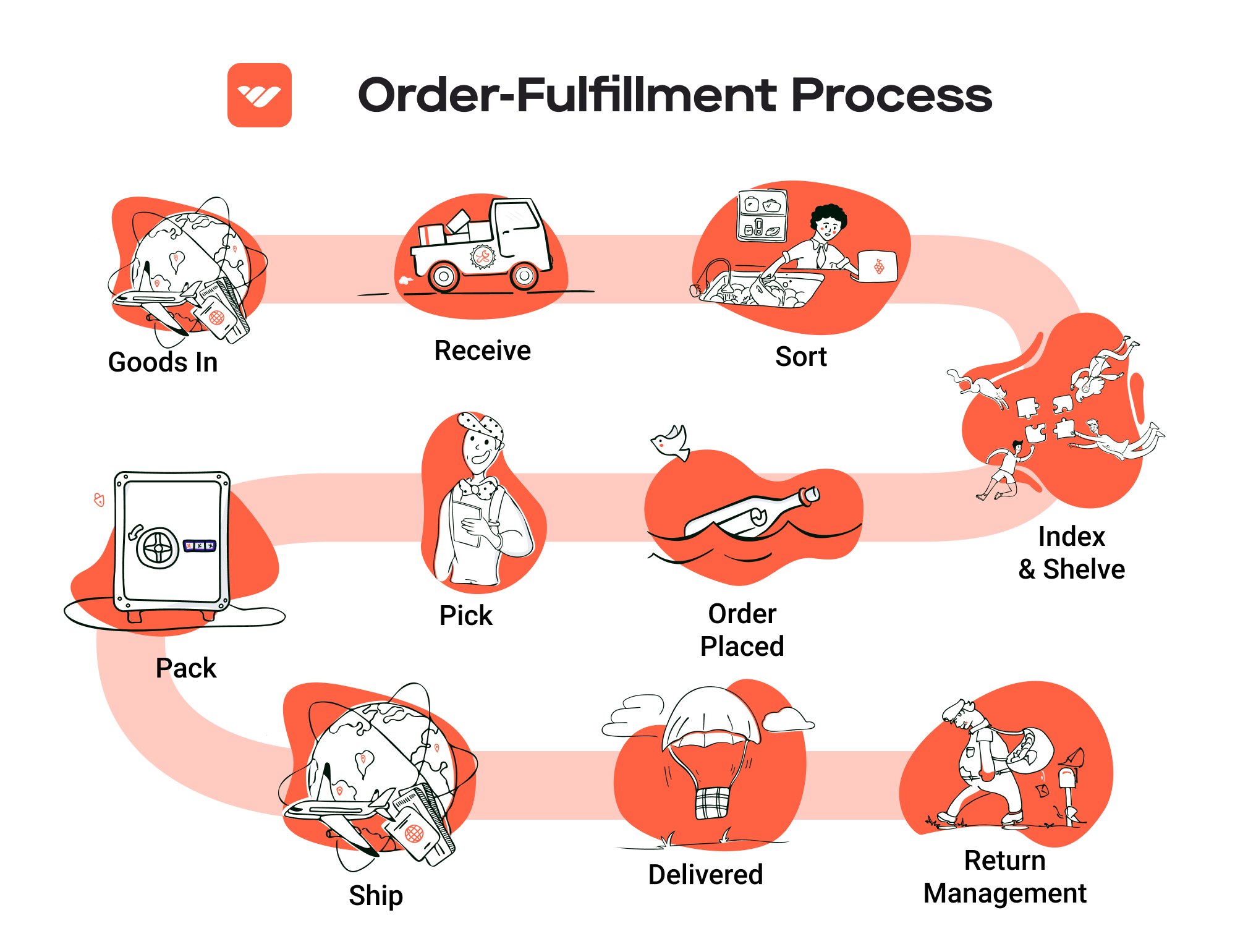
While dropshipping offers low overhead costs and reduces the risk associated with unsold inventory, it also comes with its own set of challenges. One of the primary drawbacks is the lower profit margins, as retailers often have to pay higher prices per unit to the supplier. Additionally, shipping times can be longer, especially if suppliers are located overseas, which can lead to customer dissatisfaction. The reliance on suppliers for order fulfillment can also pose risks regarding quality control and inventory availability, as retailers have limited visibility into their suppliers’ operations.
In summary, each fulfillment model—whether in-house, 3PL, or dropshipping—has its unique advantages and disadvantages. Selecting the right model depends largely on the business stage, operational capabilities, and long-term growth strategy. By carefully considering these factors, e-commerce business owners can make informed decisions that align with their overall goals and customer expectations.
A Deep Dive into Amazon FBA: Pros, Cons, and Who It’s For
Understanding Fulfillment by Amazon (FBA)
Fulfillment by Amazon (FBA) is a service offered by Amazon that allows e-commerce sellers to store their products in Amazon’s fulfillment centers. Amazon takes care of storage, packaging, shipping, and customer service on behalf of the sellers. When a customer places an order, Amazon picks, packs, and ships the product directly to the customer, allowing sellers to leverage Amazon’s vast logistics network and customer base.
How FBA Works
-
Inventory Storage: Sellers send their products to Amazon’s fulfillment centers. Amazon provides guidelines on how to prepare and package items to ensure they meet their standards.
-
Order Management: Once a customer places an order on Amazon, the FBA system automatically processes the order. This includes picking the product from the warehouse, packing it securely, and shipping it.
-
Customer Service: Amazon handles all customer inquiries and returns related to FBA orders. This includes managing refunds and replacements, thus relieving sellers from the burden of customer service.
-
Shipping and Tracking: FBA provides sellers with Amazon’s shipping capabilities, including access to Prime eligibility, which can significantly enhance visibility and sales.
-
Returns Management: Amazon also manages returns, making it easier for customers to send back items, which can enhance customer satisfaction and trust.
Pros of Fulfillment by Amazon (FBA)
-
Prime Eligibility: One of the most significant advantages of using FBA is gaining access to Amazon Prime members. Products fulfilled by Amazon are eligible for Prime shipping, which can lead to increased visibility and sales. Prime members often prefer items that can be shipped quickly and with free shipping options.
-
Customer Trust: Amazon is a trusted platform for millions of customers. By utilizing FBA, sellers can benefit from Amazon’s reputation for reliability and customer service, which can help increase conversion rates.
-
Multi-Channel Fulfillment: FBA is not limited to just Amazon sales. Sellers can use FBA to fulfill orders from their own websites and other e-commerce platforms. This flexibility allows businesses to streamline their logistics while maintaining a single inventory pool.
-
Scalability: FBA allows sellers to scale their operations without needing to manage their logistics. As businesses grow, they can send more inventory to Amazon without worrying about warehousing or hiring additional staff.
-
Time Savings: By outsourcing fulfillment to Amazon, sellers can save time on logistics, allowing them to focus on other aspects of their business, such as marketing and product development.
-
Advanced Logistics: Amazon’s sophisticated logistics network ensures fast and reliable shipping. Their technology optimizes inventory placement and order routing, which can lead to lower shipping costs and improved delivery times.
Cons of Fulfillment by Amazon (FBA)
-
High Fees: While FBA provides many benefits, it comes at a cost. Sellers incur various fees, including storage fees, fulfillment fees per unit, and additional charges for long-term storage. These fees can eat into profit margins, especially for low-cost items.
-
Strict Inventory Rules: Amazon has specific guidelines for inventory management, including restrictions on certain products and requirements for packaging and labeling. Sellers must adhere to these rules to avoid penalties, which can be challenging for some businesses.
-
Commingling Risks: FBA operates on a commingling model, where inventory from different sellers is stored together. This can lead to concerns about brand integrity, as products from different sellers may be mixed, leading to potential issues with quality control and counterfeit products.
-
Limited Control: When using FBA, sellers relinquish some control over the fulfillment process. This includes aspects such as packaging and shipping methods, which may not align with a seller’s brand identity.
-
Inventory Management Challenges: Managing inventory levels can be complex, especially if a seller sells on multiple platforms. Sellers must ensure they have enough inventory at Amazon’s fulfillment centers to meet demand without incurring excess storage fees.
Who is FBA Best For?
Fulfillment by Amazon is best suited for:
-
Established Sellers: Businesses with a steady volume of sales can benefit from the efficiencies that FBA offers, particularly those who sell items that are often impulse purchases.
-
Small to Medium-Sized Businesses: Companies looking to scale quickly without the overhead of managing their logistics can leverage FBA to grow their reach.
-
Brands with High Turnover Products: Sellers with products that have a quick turnover can maximize the benefits of FBA while minimizing storage fees.
-
Multi-Channel Sellers: Businesses that sell across various platforms (e.g., their own website, eBay, etc.) can utilize FBA for streamlined fulfillment across channels.
-
New Entrepreneurs: Startups that want to enter the market quickly can take advantage of Amazon’s existing infrastructure, gaining immediate access to a large customer base without heavy initial investments in logistics.
In summary, while Fulfillment by Amazon offers numerous benefits that can streamline operations and enhance sales potential, it also comes with its own set of challenges. Sellers must weigh the pros and cons carefully to determine if FBA aligns with their business goals and operational capabilities.
Core Services Offered by Fulfillment Centers
Inventory Management & Warehousing
Effective inventory management and warehousing are fundamental components of a successful e-commerce operation. Fulfillment centers provide businesses with dedicated storage space that is optimized for inventory control, enabling sellers to efficiently manage their stock levels.
What it is: Inventory management involves tracking and controlling stock levels, orders, sales, and deliveries. Fulfillment centers utilize advanced software systems to monitor inventory in real-time, ensuring that businesses always know what products are available and when to reorder.
Benefits:
1. Reduced Overhead Costs: By outsourcing warehousing needs, e-commerce businesses can eliminate the costs associated with maintaining their own storage facilities, including rent, utilities, and staffing.
2. Scalability: Fulfillment centers allow businesses to scale their inventory based on demand without the burden of investing in additional warehouse space or personnel.
3. Optimized Storage Solutions: Many fulfillment centers use advanced technology to optimize space and streamline inventory management, reducing the risk of overstocking or stockouts.
Pick and Pack Services
Pick and pack services are vital to the order fulfillment process, ensuring that products are accurately selected and packaged for shipment to customers.
What it is: This service involves the systematic selection (picking) of products from the warehouse and their subsequent packaging (packing) for delivery. Fulfillment centers employ trained staff and sophisticated technology to ensure accuracy and efficiency.
Benefits:
1. Increased Efficiency: Automated systems enable faster order processing, which means that businesses can fulfill orders more quickly, improving customer satisfaction.
2. Accuracy in Order Fulfillment: Fulfillment centers implement rigorous quality control measures to minimize picking errors, ensuring that customers receive exactly what they ordered.
3. Flexible Packing Options: Businesses can choose from a variety of packing materials and methods, allowing for customization to enhance brand presentation and protect products during transit.
Kitting and Assembly
Kitting and assembly services allow e-commerce businesses to offer bundled products or custom configurations, catering to specific customer needs and preferences.
What it is: Kitting involves assembling individual items into a ready-to-sell package, while assembly refers to the creation of a final product from various components. Fulfillment centers can handle these processes efficiently, whether for promotional bundles or complex product assemblies.
Benefits:
1. Enhanced Product Offerings: By offering kits or assembled products, businesses can create unique selling propositions that differentiate them from competitors, potentially increasing sales.
2. Streamlined Operations: Outsourcing kitting and assembly to fulfillment centers frees up internal resources, allowing businesses to focus on marketing and sales strategies rather than production logistics.
3. Cost Efficiency: Fulfillment centers often have the infrastructure and expertise to manage kitting and assembly more cost-effectively than businesses can in-house, especially for seasonal promotions or limited-time offers.
Returns Management (Reverse Logistics)
Returns management is a critical aspect of e-commerce fulfillment, as it directly impacts customer satisfaction and retention.
What it is: Reverse logistics refers to the process of handling returned products. Fulfillment centers manage this process by inspecting returned items, restocking them, or disposing of them as necessary, all while keeping the business informed about return trends and issues.
Benefits:
1. Customer Satisfaction: A streamlined returns process helps ensure that customers have a positive experience even when returning products, which can lead to repeat business and positive reviews.
2. Operational Efficiency: By outsourcing returns management, e-commerce businesses can reduce the administrative burden associated with processing returns, allowing them to focus on core operations.
3. Data Insights: Fulfillment centers often provide analytics related to returns, helping businesses understand return rates, reasons for returns, and opportunities for product improvement.
In conclusion, leveraging the core services offered by fulfillment centers can significantly enhance an e-commerce business’s operational efficiency and scalability. From inventory management to returns processing, fulfillment centers provide the expertise and infrastructure necessary to meet the evolving demands of the marketplace. By outsourcing these critical functions, businesses can focus on growth and customer engagement, ultimately driving sales and profitability.
How to Choose a Fulfillment Partner: A 6-Point Checklist
Location & Warehouse Network
Choosing a fulfillment partner with a strategically located warehouse network is crucial for timely deliveries and reduced shipping costs. The closer your fulfillment centers are to your customers, the faster you can deliver products, which enhances customer satisfaction and potentially boosts sales.
Questions to Ask:
– Where are your warehouses located, and how does this align with my target market?
– How do you ensure timely shipping and delivery during peak seasons?
– Do you have multiple locations to support both domestic and international shipping?
Technology & Integrations
In today’s e-commerce landscape, robust technology and seamless integrations with your existing systems are essential for efficient operations. A fulfillment partner should provide a user-friendly platform that allows for real-time tracking, inventory management, and order processing.
Questions to Ask:
– What technology platform do you use for order management, and can it integrate with my e-commerce system (e.g., Amazon Seller Central, Shopify)?
– How do you handle inventory tracking, and can I access real-time data?
– Do you offer automated processes for order routing and returns management?
Specializations (e.g., Cold Storage, Oversized Items)
Depending on your product offerings, you may need a fulfillment partner with specific capabilities. For example, if you sell perishable goods, cold storage is essential. Similarly, if you deal with oversized or bulky items, ensure the partner can accommodate such requirements.
Questions to Ask:
– What special services do you offer that align with my product needs (e.g., temperature-controlled storage, custom packaging)?
– Can you handle products that require special handling or storage conditions?
– How do you manage compliance with industry-specific regulations (e.g., food safety, hazardous materials)?
Scalability & Capacity
As your business grows, your fulfillment needs will evolve. It’s important to partner with a fulfillment provider that can scale its services in line with your growth. This includes having the capacity to handle increased order volumes without compromising service quality.
Questions to Ask:
– What is your current capacity, and how do you handle peak seasons or sudden spikes in demand?
– Can you provide a roadmap for scaling services as my business grows?
– How do you manage logistics challenges during high-demand periods (e.g., holidays)?
Pricing and Contracts
Understanding the pricing structure and contract terms is vital for maintaining profitability. Look for transparency in pricing and ensure there are no hidden fees. Evaluate whether the fulfillment partner’s costs align with your budget while offering value for the services provided.
Questions to Ask:
– Can you provide a detailed breakdown of your pricing model (e.g., storage fees, shipping costs, pick-and-pack fees)?
– Are there any additional fees I should be aware of (e.g., for returns processing, seasonal surcharges)?
– What are the terms of the contract, and is there flexibility for renegotiation as my needs change?
Customer Support & Reviews
Excellent customer support can make a significant difference in your fulfillment experience. Look for partners that offer responsive and knowledgeable support. Additionally, researching reviews and testimonials can provide insights into the partner’s reliability and performance.
Questions to Ask:
– What kind of customer support do you offer (e.g., dedicated account manager, 24/7 support)?
– How do you handle issues or discrepancies in order fulfillment?
– Can you provide references or case studies from clients in my industry?
Conclusion
Choosing the right fulfillment partner is a strategic decision that can significantly impact your e-commerce business’s success. By carefully evaluating potential partners against this checklist, you can ensure that you select a fulfillment provider that meets your specific needs, supports your growth ambitions, and delivers exceptional service to your customers. Taking the time to ask the right questions will ultimately lead to a more fruitful partnership, enabling you to focus on scaling your business while maintaining high customer satisfaction.
Understanding Fulfillment Pricing: A Breakdown of Common Fees
Initial Setup Fees
Initial setup fees are one-time charges that cover the costs associated with onboarding your business to a fulfillment service. This may include account setup, integration with your e-commerce platform (like Amazon Seller Central), and any necessary training or technical support to ensure your systems are aligned. The exact cost can vary significantly based on the complexity of your operations and the fulfillment partner’s pricing structure. Typically, you can expect fees ranging from a few hundred to several thousand dollars, depending on the level of service and customization required. It is essential to clarify what these fees entail upfront to avoid unexpected costs.
Receiving Fees
Receiving fees are charged when your inventory arrives at the fulfillment center. These fees cover the labor and processes involved in unloading, inspecting, and storing your products. They are usually calculated per pallet or per unit, depending on the size and nature of your products. For instance, some providers may charge a flat rate for receiving a pallet, while others might charge based on the number of individual items being processed. It’s crucial to understand how these fees are structured, especially if your inventory fluctuates in size or type, as this will impact your overall fulfillment costs.
Storage Fees (per pallet/bin)
Storage fees are ongoing charges for keeping your inventory in the fulfillment center. These fees are typically calculated on a monthly basis and can be based on the amount of space your products occupy, measured in pallets or bins. Rates can vary based on the fulfillment center’s location and the overall demand for storage space. Additionally, many fulfillment centers implement a tiered pricing structure where costs decrease with higher volume storage. For businesses with seasonal inventory fluctuations, it’s wise to inquire about any long-term storage fees that might apply if products remain unsold for extended periods.
Pick & Pack Fees (per item/order)
Pick and pack fees are incurred each time an order is processed. This fee covers the labor involved in picking items from the warehouse, packing them securely for shipment, and preparing them for delivery. These fees are generally calculated per item or per order, depending on the fulfillment provider’s pricing model. For example, if you have a multi-item order, you might be charged a base fee plus an additional fee for each item picked. Understanding this structure is vital for budgeting, particularly if your business model involves frequent smaller orders, as costs can add up quickly.
Shipping Fees
Shipping fees are perhaps the most variable and significant aspect of fulfillment pricing. These fees depend on several factors, including the weight and dimensions of the packages, the shipping method chosen (e.g., standard vs. expedited), and the destination of the shipment. Fulfillment centers often have negotiated rates with major carriers, which can lead to savings compared to retail shipping prices. It’s important to request detailed shipping rate information based on your typical order profiles and shipping locations. Some fulfillment services might also offer flat-rate shipping options, which can simplify budgeting.
Tips for Getting an Accurate Quote
-
Define Your Needs: Before approaching fulfillment providers, clearly outline your business requirements, including average order volume, product types, and seasonal fluctuations. This information will help providers give you a more tailored quote.
-
Request Detailed Pricing: Ask for a breakdown of all potential fees, including any hidden costs that might arise during the fulfillment process. This will give you a clearer picture of your total expenses.
-
Consider Volume Discounts: Inquire about pricing structures based on volume. Many fulfillment centers offer discounts for higher volumes, so understanding your growth projections can help you negotiate better rates.
-
Evaluate Service Levels: Different fulfillment providers may offer varying levels of service. Ensure that the quotes reflect comparable service quality and capabilities, such as technology integration and customer support.
-
Trial Period: If possible, negotiate a trial period with your fulfillment partner. This allows you to assess the quality of service and any associated costs without a long-term commitment.
By understanding these common fulfillment pricing models and following these tips, you can make informed decisions that align with your business goals while effectively managing your fulfillment costs.
Frequently Asked Questions (FAQs) about Fulfillment
1. What is Amazon fulfillment?
Amazon fulfillment refers to the comprehensive logistics services provided to sellers on the Amazon marketplace, encompassing inventory storage, order processing, picking, packing, shipping, and returns management. These services are designed to meet Amazon’s stringent requirements and customer expectations for fast and reliable delivery.
2. How does Fulfillment by Amazon (FBA) work?
FBA allows sellers to store their products in Amazon’s fulfillment centers. When a customer places an order, Amazon handles the picking, packing, shipping, and customer service. Sellers benefit from Amazon’s logistics network, including Prime eligibility, which can significantly increase sales potential.
3. What is a third-party logistics provider (3PL)?
A 3PL is a service provider that manages logistics and fulfillment for businesses, allowing them to outsource aspects of their supply chain. This includes warehousing, order processing, shipping, and returns management. Using a 3PL can help businesses scale operations efficiently without the overhead of managing logistics in-house.
4. What’s the difference between a warehouse and a fulfillment center?
While both warehouses and fulfillment centers store products, their functions differ significantly. A warehouse is primarily for storage, whereas a fulfillment center is optimized for processing orders and shipping them directly to customers. Fulfillment centers focus on speed and efficiency to meet customer demand.
5. How can I transition from FBA to a 3PL model?
Transitioning from FBA to a 3PL model involves several steps, including inventory transfer management, system integration, and strategic planning to ensure business continuity. It’s essential to choose a 3PL that understands Amazon’s requirements to maintain seller performance metrics during the transition.
6. How much do fulfillment services cost?
The cost of fulfillment services varies based on factors such as order volume, storage requirements, and the specific services offered (e.g., packing, shipping, returns management). Generally, businesses can expect to pay a per-order fee, monthly storage fees, and sometimes additional charges for specific services. It’s advisable to get a tailored quote based on your specific needs.
7. Can a 3PL handle returns for my Amazon orders?
Yes, most 3PL providers can manage the entire returns process for Amazon orders. This includes receiving returned items, inspecting them, and deciding whether to restock or dispose of them based on your instructions. Outsourcing returns can save you significant time and resources.
8. What are the advantages of using a 3PL over FBA?
Using a 3PL offers several advantages, including greater flexibility, personalized support, custom packaging options, and potentially lower costs. Additionally, a 3PL can manage fulfillment across multiple sales channels from a single inventory pool, providing a more integrated approach to logistics.
9. Do you support international Amazon marketplaces?
Yes, many 3PL providers support sellers across international Amazon marketplaces. This includes local warehousing, compliance with country-specific regulations, and optimized cross-border shipping solutions to help you expand into new regions effectively.
10. How do I choose the right fulfillment partner for my Amazon business?
When selecting a fulfillment partner, consider factors such as their experience with Amazon’s requirements, scalability of services, technology and tracking capabilities, and customer support. It’s crucial to choose a partner that aligns with your business goals and can adapt to your growth needs.
Conclusion: Is Outsourcing Fulfillment the Right Move for Your Business?
Unlocking the Potential of Outsourcing Fulfillment
Outsourcing fulfillment can be a transformative decision for e-commerce businesses aiming to scale efficiently. By leveraging a dedicated fulfillment service, companies can save significant time and resources, allowing them to focus on core activities such as product development and marketing. Fulfillment partners streamline operations, manage inventory, and ensure timely deliveries, freeing business owners from the complexities of logistics.
Moreover, scalability becomes a natural benefit of outsourcing. As your business grows, a capable fulfillment partner can adjust to increased order volumes without the need for substantial investment in infrastructure or personnel. This flexibility is crucial during peak seasons or unexpected surges in demand, ensuring that you meet customer expectations without compromising service quality.
Expertise is another invaluable asset that comes with choosing the right fulfillment partner. Established providers bring years of experience and specialized knowledge of market dynamics, compliance standards, and shipping efficiencies. This expertise can lead to cost savings and improved operational performance, as they utilize advanced technology and best practices to optimize every step of the order fulfillment process.
However, selecting the right partner is critical to harnessing these benefits effectively. Not all fulfillment services are created equal; it’s essential to find one that aligns with your business model, understands your unique needs, and offers a robust support system for growth.
As a strategic call-to-action, consider conducting a thorough audit of your current shipping and fulfillment processes. Evaluate your pain points, costs, and capacity for growth. This assessment can help you determine if a fulfillment partner is the right next step for your business, paving the way for enhanced efficiency and accelerated growth.
Important Disclaimer
⚠️ Important Disclaimer
The information in this guide is for educational purposes. Fulfillment services, pricing, and platform features change frequently. Always conduct your own due diligence and consult with providers directly before making business decisions.
